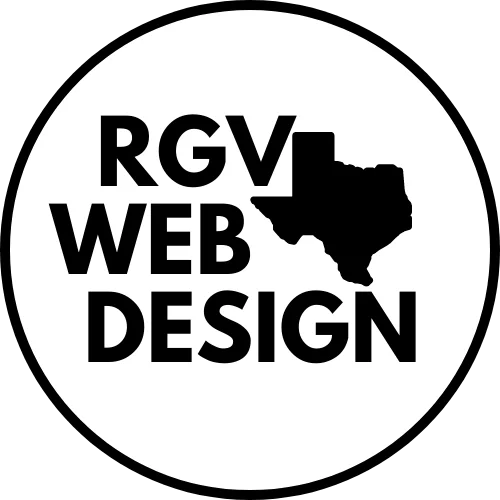In today’s fast-paced digital landscape, having a website that functions seamlessly on mobile devices is no longer just an option—it’s an absolute necessity. At RGV Web Design, we’ve seen firsthand how mobile-first design can make or break a business’s online presence. If your website isn’t optimized for mobile, you’re potentially alienating more than half of your audience.
Let’s dive into what mobile-first design is, why it’s crucial in 2024, and how you can implement it effectively to ensure your website not only looks good but also performs exceptionally well on mobile devices.
What is Mobile-First Design?
Mobile-first design is exactly what it sounds like: a design strategy where the mobile version of your website is created first, and then scaled up for larger devices like tablets and desktops. This approach is a shift from the traditional method where websites were designed for desktops first and then adapted for mobile.
But why this shift? The answer lies in how people use the internet today. Over 50% of global web traffic now comes from mobile devices. People are browsing, shopping, and engaging with content on their smartphones more than ever before. As a result, they expect a fast, intuitive, and seamless mobile experience. If your site doesn’t meet these expectations, users will quickly move on, often to a competitor’s site that offers a better mobile experience.
Mobile-First vs. Responsive Design
While mobile-first design is a part of responsive design, they’re not the same. Responsive design ensures that your site looks good on any device by automatically adjusting its layout based on screen size. Mobile-first design, however, takes this concept further by focusing on the mobile experience from the beginning. This proactive approach ensures that your mobile users get the best experience possible, rather than merely adapting a desktop design to fit a smaller screen.
The Benefits and Key Elements of Mobile-First Design
Now that we’ve covered what mobile-first design is, let’s explore its benefits and the key elements that make it work. These two aspects are closely connected, and understanding them will help you see why mobile-first design is essential for your website’s success in 2024.
1. Improved User Experience
User experience (UX) is at the heart of mobile-first design. On a mobile device, users expect a streamlined, easy-to-navigate experience. They don’t have the patience for slow-loading pages or clunky interfaces. By prioritizing mobile design, you’re forced to focus on the essentials—what truly matters to your users.
Key Element: Content Prioritization
Content prioritization means placing the most important information front and center. On mobile, this often involves leading with your primary call to action, whether it’s a ‘Buy Now’ button, a signup form, or contact information. Supporting content, like detailed descriptions or secondary links, can be placed further down the page or within expandable sections to keep the initial view clean and focused.
This approach enhances the user experience by making your site easier to navigate and faster to load, leading to higher engagement and better conversion rates.
2. Enhanced SEO Performance
If you want your website to rank well on search engines like Google, mobile-first design is a must. Google now uses mobile-first indexing, meaning it primarily looks at the mobile version of your site when determining search rankings. If your mobile site isn’t optimized, your rankings—and consequently your traffic—will suffer.
But mobile-first design isn’t just about satisfying Google’s requirements. It also improves user engagement metrics like time on site, bounce rate, and pages per session, which are increasingly important factors in search rankings. A better mobile experience naturally leads to better SEO performance.
Key Element: Simplified Navigation
To boost both UX and SEO, your site’s navigation needs to be intuitive and user-friendly. On mobile, this often means using a minimalistic approach with clear, easily accessible menus and calls to action. A well-placed hamburger menu can help tuck away additional navigation options without taking up valuable screen space.
This simplicity not only enhances the user experience but also encourages users to explore more of your site, which can positively impact your SEO.
3. Faster Load Times
Speed is crucial on mobile. Studies show that if a mobile page takes more than three seconds to load, over half of users will leave. A mobile-first design approach naturally leads to faster load times because it emphasizes efficiency from the start.
Key Element: Optimized Media
One of the key factors in speeding up your site is optimizing your images, videos, and other media. Large, high-resolution images can significantly slow down your site’s performance on mobile devices. By using modern formats like WebP and implementing responsive images, you can ensure that your site loads quickly on any device. Lazy loading, where images load only as they come into view, can also improve load times significantly.
4. Increased Accessibility
Mobile-first design doesn’t just improve the experience for your average user—it also makes your site more accessible to people with disabilities. Features like larger fonts, simplified layouts, and touch-friendly interfaces make your site usable for a wider audience.
Key Element: Touch-Friendly Design
To ensure accessibility and user-friendliness, your site needs to have touch-friendly design elements. This means making sure that all interactive elements—like buttons, links, and forms—are large enough to be tapped easily without causing frustration. A good touch target size is around 44×44 pixels, and there should be enough space between touch targets to avoid accidental taps.
By making your site accessible, you’re opening it up to a broader audience, which can translate into more potential customers and better SEO rankings, as search engines prioritize sites that offer a better experience for all users.
Bringing It All Together
The power of mobile-first design is clear when you consider its benefits and the key elements that drive its success. It’s not just about making your site look good on a phone—it’s about creating a superior user experience that leads to better engagement, higher search rankings, faster load times, and greater accessibility.
In today’s competitive online landscape, you can’t afford to ignore the mobile experience. By embracing mobile-first design, you’re not only meeting your users where they are but also setting your business up for long-term success. At RGV Web Design, we specialize in creating mobile-first websites that deliver results. If you’re ready to take your website to the next level, contact us today for a free consultation.


